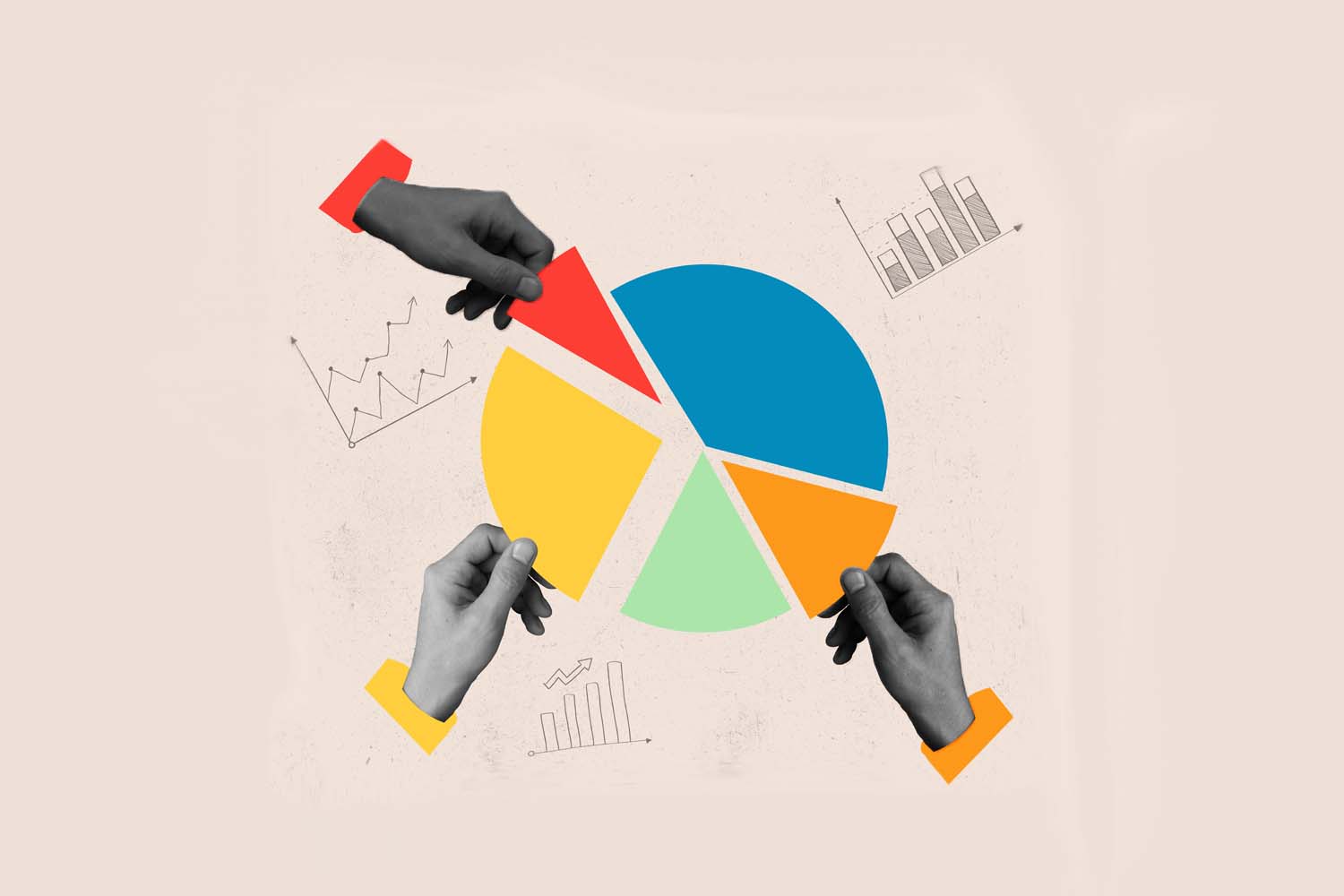March 14, 2023, is Equal Pay Day. This is a starting point resource for employers to actively support and recognize the importance of pay equity. Learn what your organization needs to know about Equal Pay Day.
Overview
Equal Pay Day symbolically marks how far into the year the average woman must work to be paid the average man’s annual pay from the previous year. The day acknowledges the important issue of pay equity and all the work needed to achieve it.
We’ve created this resource to cover why this day is important to recognize, historically and for the future. We also include ideas for what leaders like you can do about it, books to read, documentaries to watch, and examples of how other companies are recognizing the day.
Use the quick navigation links below to jump ahead to a specific topic:
- The History of Equal Pay Day
- Why Equal Pay Day Is Important
- How Equal Pay Day Is Traditionally Recognized
- Employee Considerations
- How to Address Equal Pay in the Workplace
- How Companies Are Recognizing Equal Pay Day
- Upcoming Events
- Documentaries to Watch
- Books to Read
The History of Equal Pay Day
Since 1996, every spring the National Committee on Pay Equity has acknowledged the gender pay gap with National Equal Pay Day. The day is scheduled for March 14 in 2023, the earliest day in its history. (It is also consciously not recognized on any religious holiday.)
Why Equal Pay Day Is Important
The average woman who works full-time is paid just 84 cents for every dollar given to the average man, according to U.S. Census Bureau data. That’s up from the 1960s and ‘70s, when the female-to-male earnings ratio was between 57 to 61 cents on the dollar. However, the gender pay gap has hovered around its current level for the past couple of decades.
The pay disparity varies for women of different backgrounds, and there are multiple Equal Pay Days to acknowledge that fact. According to the American Association of University Women (AAUW), an advocacy group dedicated to promoting equity and education for women and girls, here is the calendar for 2023:
June 15 — LGBTQIA+ Equal Pay Awareness Day. Currently there is not enough data available to calculate a specific pay gap, according to the AAUW.
July 27 — Black Women’s Equal Pay Day. Black women, on average, are paid 67 cents for every dollar paid to non-Hispanic white men working full-time.
August 15 — Moms’ Equal Pay Day. Full-time working moms are paid 74 cents for every dollar paid to dads.
October 5 — Latinas’ Equal Pay Day. Latinas are paid 57 cents for every dollar paid to non-Hispanic white men.
November 30 — Native Women’s Equal Pay Day. Native women working full-time make 57 cents — and those working part-time and seasonally bring in just 51 cents — for every dollar paid to non-Hispanic white men, on average.
New pay transparency laws also drive the need to recognize Equal Pay Day and for companies to work toward pay equity. Christine Hendrickson, VP of Strategic Initiatives at Syndio, a workplace equity data analytics platform, notes recent developments such as Colorado implementing pay transparency in job postings in 2022, and nine jurisdictions — including New York City, Washington, and California — following suit. “Pay equity and workplace equity more generally have never been more important to leaders,” she says.
How Equal Pay Day Is Traditionally Recognized
Many organizations share social media posts and other advertising campaigns acknowledging the need for equality and generally supporting women for Women’s History Month and International Women’s Day (IWD). Not quite as many, however, have done the work to achieve pay equity within their own workforces. One app, the Gender Pay Gap Bot, identifies such companies and tweets the income disparity between the men and women working there.
Carolyn York, secretary-treasurer of the National Committee for Pay Equity, explains: “Unfortunately, I have not heard from many private companies about their work to achieve pay equity within their organizations… The most common actions I hear of are ‘acknowledgement’ of the day and perhaps celebration of women and people of color who have achieved high-level positions within the company. Annual pay analyses, if done correctly and if they correct the inequities found, would be very useful.”
Employee Considerations
An increasing number of companies are directly addressing pay equity. New laws have driven more employers to publish pay ranges on job postings and conduct annual pay equity analyses, whether by legal requirements (as in California and Illinois) or as a proactive measure against litigation (Massachusetts, Oregon, Rhode Island, and Colorado provide safe harbors for employers). But it’s also the social pressure from activist investors and employees that is fueling the movement.
Just Capital, a research firm that ranks public companies based on social issues, found that out of the 100 largest American public companies by workforce size, 43% disclose that they have conducted a pay gap analysis by race and ethnicity (up from 34% last year), and 22% disclose the actual results (up from 14%). Meanwhile, analyses focused on the gender gap have slowly climbed, with 23% of 954 companies evaluated disclosing a gender pay gap analysis, up from 14% in 2019.
Syndio’s Hendrickson expects more companies to conduct pay equity due diligence at every level, as employee pressure grows. “When these pay scale disclosure laws went into effect, that information about ‘what is the pay range for my job and how much is the pay range for other jobs in my organization?,’ it changed the game because (the information) is so much more accessible to employees,” she says.
How to Address Equal Pay in the Workplace
To acknowledge the true purpose behind Equal Pay Day, leaders must work with their companies all year long to achieve pay equity. Here are a few points to get you started.
Establish a job-leveling framework to share with applicants and employees.
In addition to being transparent on salary ranges, leaders should have their companies develop a structure that outlines job responsibilities and expectations that are consistent for similar roles across departments, recommends Hendrickson (a former attorney at Seyfarth Shaw) and Matthew Gagnon, a litigator on Seyfarth Shaw’s Pay Equity Group.
This framework will provide reasoning behind assigning a compensation range associated with each skill level. A job applicant’s or rising employee’s precise pay within that range can then be determined by their credentials and experience.
Salary history cannot be a determining factor. In fact, inquiring about it is banned in some states, including California, New York, Illinois, and Massachusetts, to avoid perpetuating historical salary discrimination.
Provide managers with training and clear guidelines on how to make important decisions.
Managers are key decision makers regarding employees’ advancement. They need proper training to ensure they understand the established job framework, which should include guidelines on determining bonuses, raises, and promotions. Performance evaluations should be conducted in line with that framework based on objective criteria such as sales, production, or other relevant metrics to avoid introducing bias when assessing employees.
“Make sure managers who conduct performance reviews are trained on removing sex and race bias from their judgments,” says York, with the National Committee on Pay Equity. “Would a mom who left at a set time every day to pick up children from daycare be perceived as a lower performing employee than one who stayed late even though they both met all of their work quality and time metrics? And conversely, would you more likely offer overtime to a man because you assume he doesn’t have to rush home to his family?”
Also be sure to keep records of evaluations and assessments that were considered in making compensation decisions. “I would strongly recommend documentation, proper documentation, for all the decisions you and your managers in your companies have made so when the salaries land where they have landed, it helps mitigate risk,” says Gagnon of Seyfarth Shaw.
Regularly incorporate pay equity data analysis to identify potential gaps.
The traditional approach for companies looking to tackle pay equity is to conduct a manual analysis once a year or every other year with a contracted labor economist or consultant. The goal is to identify outliers, for instance women getting paid less than men at a statistical level.
York recommends looking “at the percentage of women and people of color in each job category. If you see that these jobs are paid less than jobs held predominately by men, correct the inequities even if you have to budget for the increases over several years.”
You may want to analyze the numbers more frequently. Equity pay software can help teams routinely analyze internal data and market data — for example location, years of experience, credentials, gender and race — to determine appropriate fair pay. Hendrickson of Syndio sees their customers utilizing pay equity audit data to inform every hiring and promotion decision. She also notes acquisitions, divestitures, and workforce reductions as critical points to fairly evaluate employee pay.
How Companies Recognize Equal Pay Day
Here’s how chief diversity officers say their companies are acknowledging Equal Pay Day and working toward and achieving pay equity.
Nathaniel Bennett, senior vice president and chief diversity, equity, and inclusion officer at Comerica Bank, explains:
“We believe that businesses play a critical role in reducing the national pay gap affecting women and minorities. We are committed to identifying and promoting best practices to reduce bias in hiring, promotion, and compensation decisions.
Our pay equity initiatives, as part of our broader DEI initiatives, make our company stronger and deliver value to our shareholders. We examine the main components of compensation, like salaries and bonuses, by grade level and position to ensure similar positions receive similar pay to the extent other factors can be equalized (e.g., time in position, performance, education). We also consider equitable benefits and look at policies and practices that potentially drive inequities. We have made a corporate-wide decision to prohibit the solicitation of salary history from applicants in all of our markets.”
Quita Highsmith, vice president and chief diversity officer at Genentech, says:
“I am proud of Genentech’s ongoing commitment to pay equity and the processes we have in place to regularly review pay to ensure there continues to be no effective difference in pay by gender or race/ethnicity. We have released the results of our pay gap analysis annually both internally, since 2019, and externally, since 2021. The pay gap data we have shared shows no effective pay difference between women and men, or between employees of color and white employees.”
Shanique Bonelli-Moore, chief diversity and social impact officer at Clorox, explains how pay equity is a clearly stated company goal that they achieved in 2022:
“We conduct pay equity analyses annually for our nonproduction teammates, partnering with a third-party labor economist to review our pay practices. Internally, this is an integrated, global effort across the company, led by our People and Legal teams who work with business leaders and managers to ensure we have a strong, well-communicated rollout to teammates. We continue to optimize this work by implementing new technology to streamline our annual process and monitoring best practices externally…
Pay equity is dynamic in nature. Given the continuous changes in the workforce (hiring, promotions, relocations, retirements, etc.), maintaining pay equity requires commitment to an annual process to review people’s pay and to make any necessary adjustments every year. At Clorox, our senior leaders are committed to this critical process to ensure our teammates are compensated fairly and continue to see Clorox as a place where they’re respected, can grow and build their careers.”
Equal Pay Day Events for March 2023
- Tribaja is hosting a mixer to promote equal pay with the BAM Dallas (Black at Microsoft) employee resource group in Dallas (March 15). The company is asking attendees to anonymously submit their salaries to their transparent salary database.
- SheTO.org is leading an event, “Ask for What You Deserve,” with speakers Bavyaa Vasudevan, head of engineering at Point, and Grant Battle, senior director at Pendo.io (March 15).
- Carolina Women+ in Tech is hosting a virtual “Women in Confidence“ discussion on salary negotiation skills with female leaders in tech (March 15).
- Bossed Up, LLC is offering a free negotiation workshop and happy hour in Denver (March 15).
- Biddle Consulting Group is leading a webinar discussion on equal pay (March 15).
- Seyfarth Shaw LLP attorneys Annette Tyman and Matthew Gagnon are presenting a webinar entitled “Equal Pay Day 2023: A Look Ahead into Trends in the Equal Pay Landscape” (March 14).
Documentaries to Watch
- “LFG” (2021; available on HBO Max)
- “9to5: The Story of a Movement” (2019; available on PBS and Netflix)
- “RBG” (2018; available on Hulu and Amazon Prime)
- “This Changes Everything” (2018; available on Netflix)
- “Equal Means Equal” (2016; available on Amazon Prime)
- “Chisholm ’72: Unbought and Unbossed” (2004; available on Amazon Prime)
Books to Read
- “Pay Up: The Future of Women And Work,” by Reshma Saujani (2022, recommended by Syndio)
- “Seen, Heard, and Paid: The New Work Rules For The Marginalized,” by Alan Henry (2022, recommended by Lydia Kan, global executive coach, Rightful Action Ltd.)
- “Getting to Diversity: What Works and What Doesn’t,” by Frank Dobbin and Alexandra Kalev (2022; recommended by Syndio)
- “Women, Work, and Wages: Equal Pay for Jobs of Equal Value,” by Donald Treiman and Heidi Hartmann (1981; recommended by Carolyn York, secretary-treasurer of National Committee for Pay Equity)
Visit our DEI calendar for a complete list of holidays, events, and commemorations for DEI leaders to recognize throughout the year.






